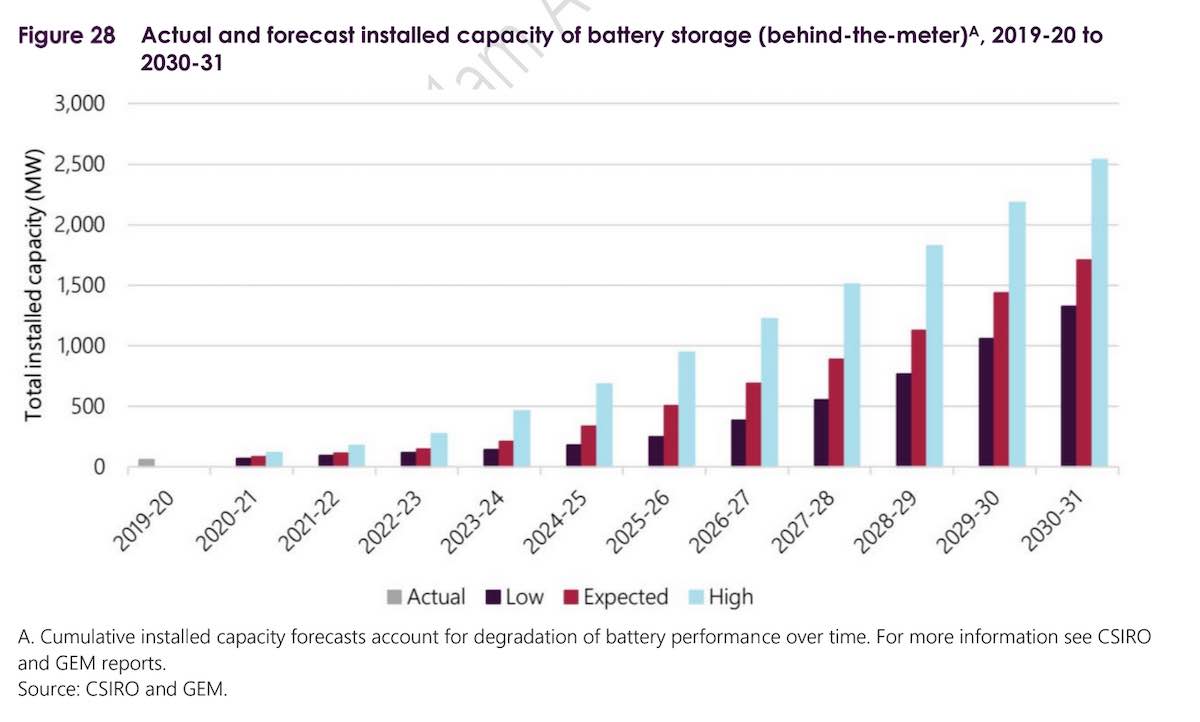
Western Australia’s shining rooftop solar example has been charted in a new report from the Australian Energy Market Operator, with a fascinating map showing where the state’s “amazing” distributed PV resource is being amassed, and where behind-the-meter battery storage is gathering momentum.
According to the latest Electricity Statement of Opportunities for the WA grid, or WEM, published on Thursday, the generation capacity of residential and small commercial solar installations reached a total of 1.74GW in April 2021 – “a capacity greater than the sum of the largest six scheduled generators” on the state’s main grid, known as the South West Integrated System (SWIS).
On behind-the-meter batteries, the ESOO puts the total amount of residential and commercial battery energy storage capacity installed on the SWIS at more than 12.8MWh, again as at April 2021 (the chart below shows the mix of residential and commercial in that total amount).
The map’s bubbles illustrate the proportion of installed capacity (at postcode level) for behind-the-meter PV (blue) and battery storage (red), relative to the total installed capacity in the SWIS (as noted above). Larger bubbles reflect a higher number of behind-the-meter installations for that postcode compared to other postcodes across the SWIS.
As the report notes, the locational trends highlight strong adoption of behind-the-meter PV in newer residential developments, which tend to be concentrated in the outer metropolitan area of Perth. Residential growth along
the north coast also goes hand-in-hand with high behind-the-meter PV uptake.
For batteries, however, the data shows higher uptake in more established areas, reflecting the fact that the higher cost of battery storage and payback periods are likely to restrict their uptake to higher disposable income households.
AEMO notes “substantial uptake” of battery storage in the Perth suburbs of Dalkeith, Peppermint Grove, Mosman Park, and Mount Claremont. In these areas, households appear to favour batteries sized between 5-14kWh, the report says, while in areas outside of metropolitan Perth, where power reliability comes into the equation, batteries are relatively large compared to the accompanying behind-the-meter PV capacity.
Looking to the future, the AEMO borrows from forecasting data from the CSIRO and Green Energy Markets to paint three scenarios for both rooftop solar and home battery growth, which are illlustrated in the charts below.
For rooftop PV, even a “low-demand” scenario forecasts an annual growth rate of 7.8%, to reach just over 4GW of installed capacity by 2030-31 – and interestingly, the AEMO puts its “expected” growth scenario just a touch above that amount. The “high-demand” scenario delivers annual growth rate of 11% to take total installed capacity to 5.5GW by 2030-31.
For batteries, behind-the-meter batteries, the AEMO expects a much steeper growth rate of 34.8% a year, which would take installed capacity to 1.7GWh in 2030-31, based on forecasts of falling battery costs over the forecast period.

Sophie is editor of One Step Off The Grid and editor of its sister site, Renew Economy. Sophie has been writing about clean energy for more than a decade.





